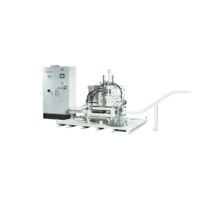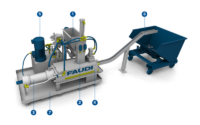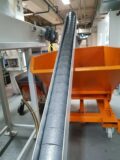Briquetting presses
From waste material to recyclable material with our efficient briquetting systems


Faudi briquetting presses are a cost-effective and sustainable solution for optimising your material recovery in the metalworking industries:
Thanks to our long-standing experience in chip and sludge processing, you benefit from increased efficiency and sustainability as well as the highest product quality with our briquette presses.
Our briquetting presses make your production residues usable again as secondary raw materials. The metal briquettes that are compressed with the chip presses – both from metal chips and from grinding sludge – can be easily recycled. This also avoids classification as “hazardous waste”. Recovered cooling lubricants can be fed directly back into your production. This closes production cycles and reduces the impact on the environment.
Your company also benefits economically from the use of our efficient briquette presses. Pressed metal chips can be sold to producers at higher prices. At the same time, high disposal costs are eliminated, especially for metal grinding sludge. The need for fresh cooling lubricants is also reduced. Moreover, our chip press is energy-efficient and has low wear. The metal and grinding sludge press therefore contributes to the economic efficiency of your production in many ways.
Our briquetting systems for metal chips are held to the highest quality standards. This concerns both the functionality of the machine and the briquette quality. Thanks to variable-speed pump drives, our press achieves a high throughput rate and also saves up to 70 % of the energy required. Thanks to the use of an internal gear pump, it is also quiet. And thanks to the low susceptibility to failure of the hydraulic pump used, the press has a long service life.
We will be happy to advise you on the configuration and possible applications of our briquetting presses, as well as on the price and installation of your individual briquetting system.

The briquetting press consists of the following components:
1. Dosing tank with screw conveyor
2. Pre-compressor
3. Main press cylinder
4. Press chamber
5. Hydraulic unit
6. Briquette discharge
7. Oil collection tray
We will be happy to advise you on the ideal configuration and areas of application for our presses for metal chips and grinding sludge.
Let’s talk without obligation about the best solution for your economical and ecological production.










